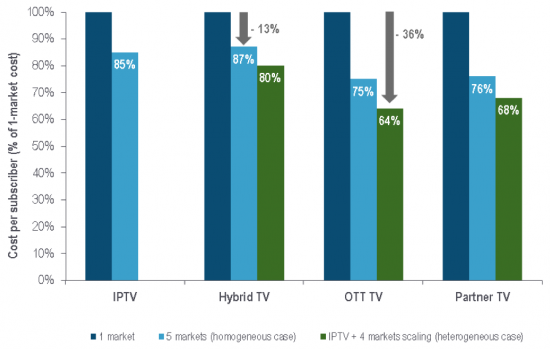































 By Bill Gerhardt, Director, IBSG Service Provider
By Bill Gerhardt, Director, IBSG Service Provider
Online video is growing at a rapid - if not explosive - pace, with innovation and disruption spreading across all areas of the value chain. Some of the greatest innovation is currently occurring around multiscreen delivery and related services.
To better understand the climate for video consumption, in March, 2012 the Cisco Internet Business Solutions Group (IBSG) surveyed 1,152 U.S. broadband consumers between the ages of 13 and 75+ to gain a better understanding of how they watch video: their habits, preferences, and the devices they use.
The study found that consumers spend more time watching Internet video today than watching DVDs/Blu-ray Discs, video on demand (VoD), or live premium cable channels - and they want to watch streaming video across a variety of screens. In the future, multiscreen delivery will take on greater importance as laptops, tablets, and smartphones advance and become even better video devices.
Service providers must address theseneeds now if they want to remain competitive, and many are exploring how an overarching cloud architecture can help deliver multiscreen options in a more uniform, thematic way.
Service Providers Struggling with Multiscreen Strategies
Despite - or perhaps because of - the high pace of innovation, the online media experience remains highly inconsistent across different multiscreen solutions. This inconsistency is related to rapidly changing consumer expectations, fragmented market structures, and vastly different SP delivery capabilities. As a result, video solution quality varies across different devices, different operating companies, and even different geographical regions.
Cisco IBSG has identified four different solution architectures that SPs are considering to help them enter or expand their position in multiscreen video delivery:
Each of these solutions can have a multiscreen variant, and there are common elements
in each that can be moved into the cloud to allow sharing across architectures. A multiscreen platform is needed that can support the common elements without having to completely reinvest or rebuild for each market variation. SPs can achieve this by harnessing economies of scale through reuse across homogeneous markets (different countries with the same video solution), and by harnessing economies of scope through reuse across heterogeneous markets (different countries with different video solutions). This can result in potential cost reductions of 13 percent to 36 percent (as shown in Figure 1) when compared with more traditional static video architectures and deployment models.
Figure 1. Cost Impact for Both Heterogeneous and Homogeneous Cases, Normalized to the IPTV Single-Market Costs.

Source: Cisco IBSG, 2012
Cloud Is a Natural Choice for Multiscreen Solution Architecture
A cloud-based solution can enable a variety of solutions across markets while maintaining a consistent user experience, because cloud can enable both homogeneous and heterogeneous economies of scale and scope. Further, it can support a number of market implementations, while keeping customer data segregated and allowing for service customization by market. This approach can reduce CapEx/OpEx, while also allowing for faster reaction to market changes.
Cisco IBSG believes SPs can simplify investment decisions by leveraging the flexibility of a cloud-based approach to multiscreen video service delivery. This can bring improved business agility and accelerated service creation cycles, especially for those service providers that need to serve multiple geographies or have varying access options in their markets.
The service provider community should move decisively to meet the pending rush to video. This win-win, no-regrets investment strategy will allow service providers to protect and grow their customer relationships, improve innovation, and better monetize their assets. With cloud, multiscreen solutions can be implemented more efficiently and uniformly, thereby profitably providing a more harmonious customer experience.
For a more complete analysis, please download our white paper, "Streaming Under the Clouds: Solutions for Multiscreen Video Delivery," at http://www.cisco.com/web/about/ac79/docs/sp/Streaming_Under_the_Clouds.pdf.
 Hot Tags :
Cloud
IBSG
multiscreen
multiscreen solution architecture
IPTV
Internet Business Solutions Group
cross-geography
hybrid TV
multiscreen delivery
Hot Tags :
Cloud
IBSG
multiscreen
multiscreen solution architecture
IPTV
Internet Business Solutions Group
cross-geography
hybrid TV
multiscreen delivery